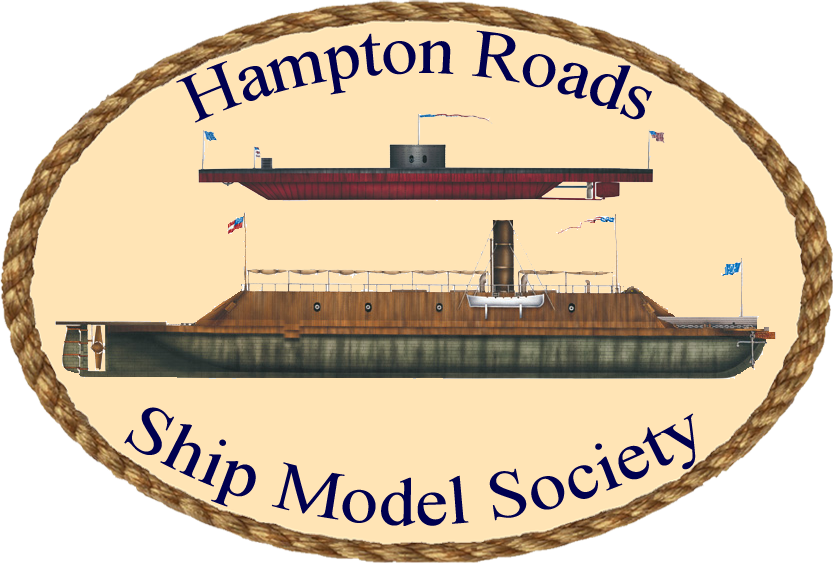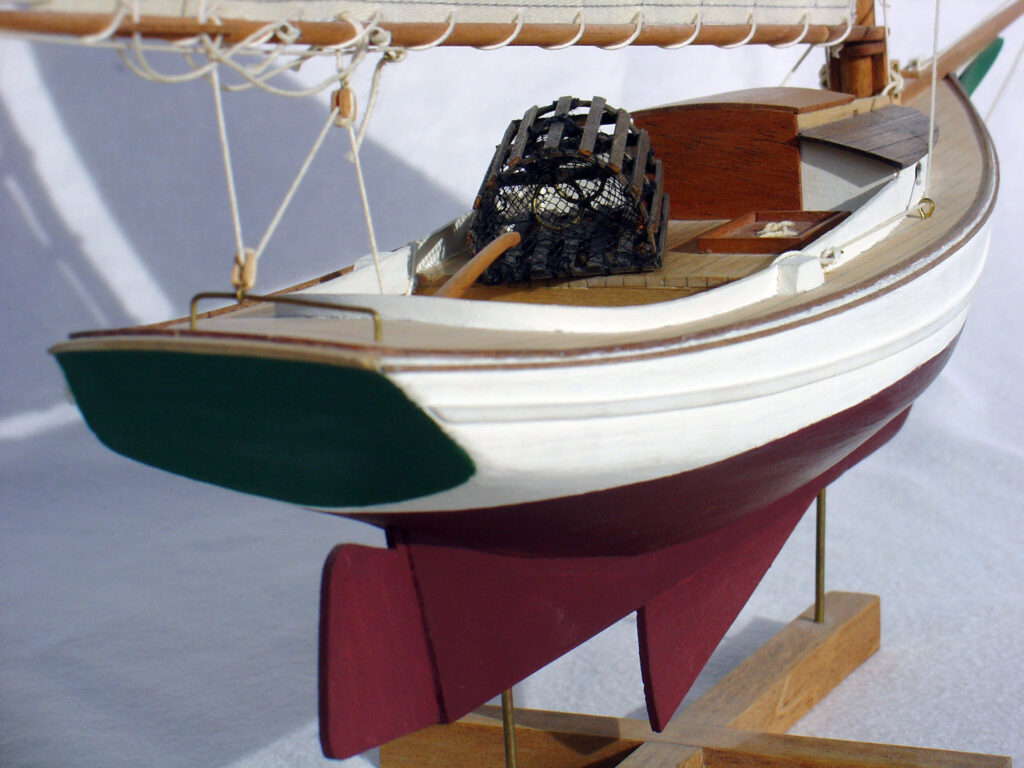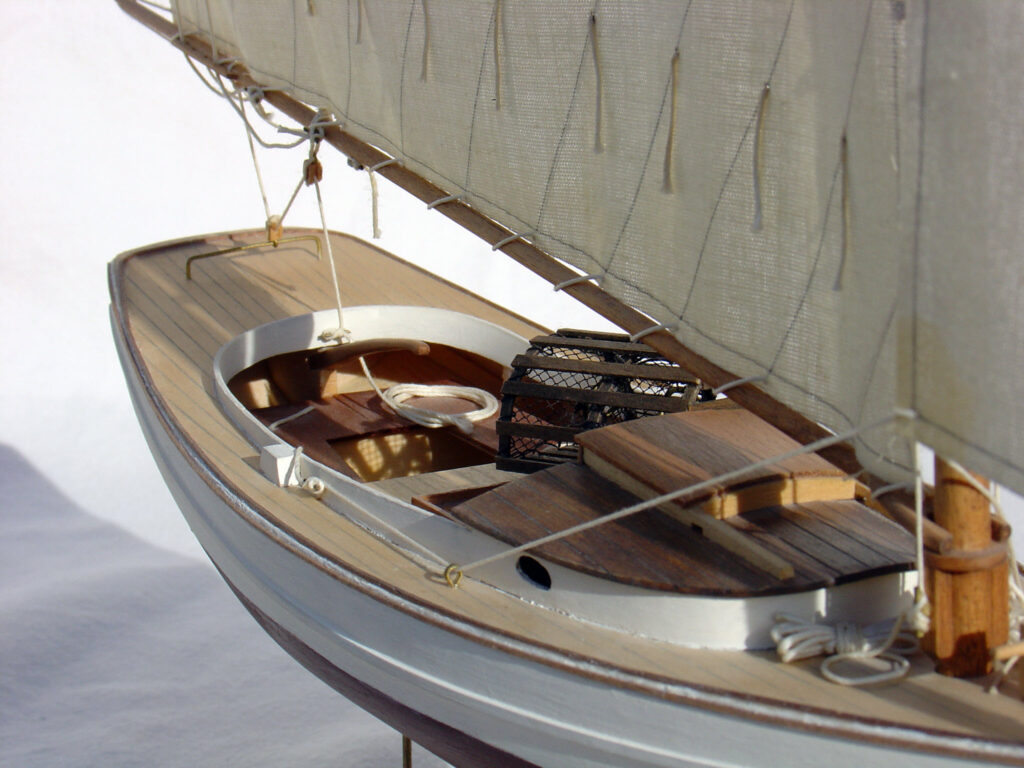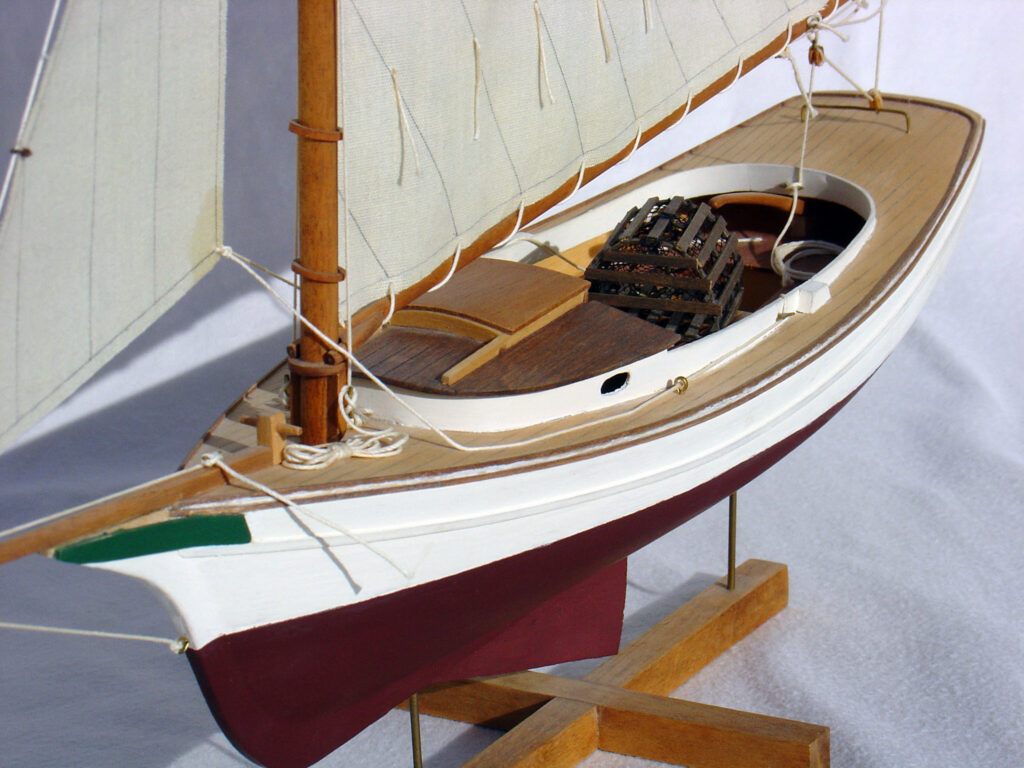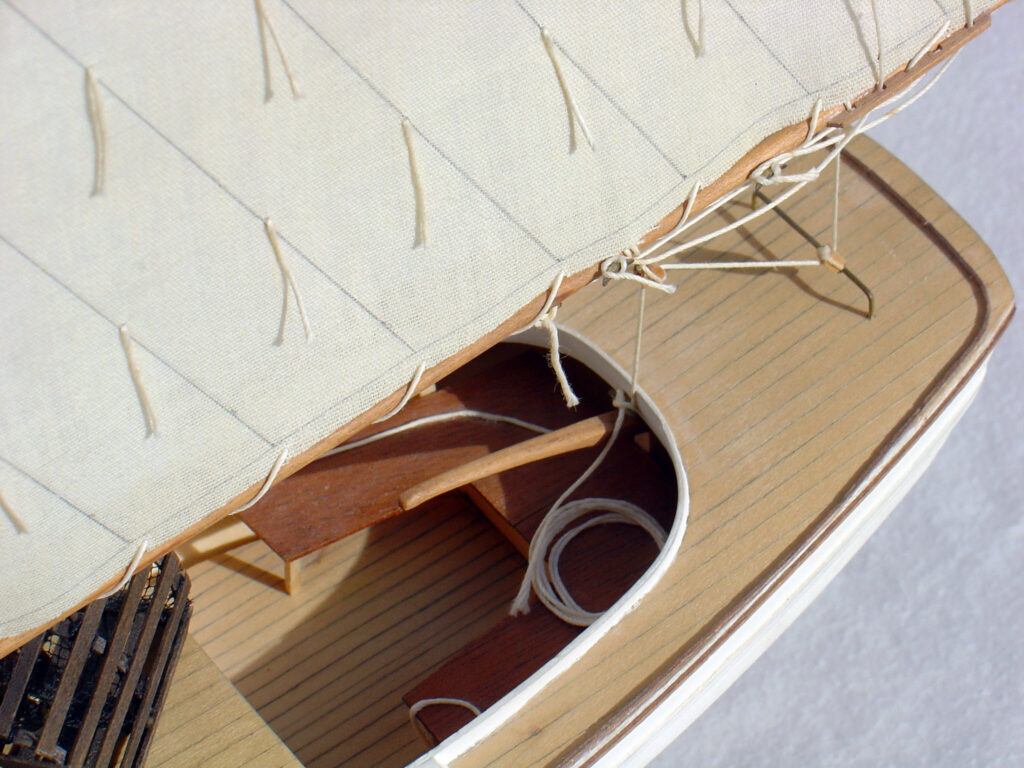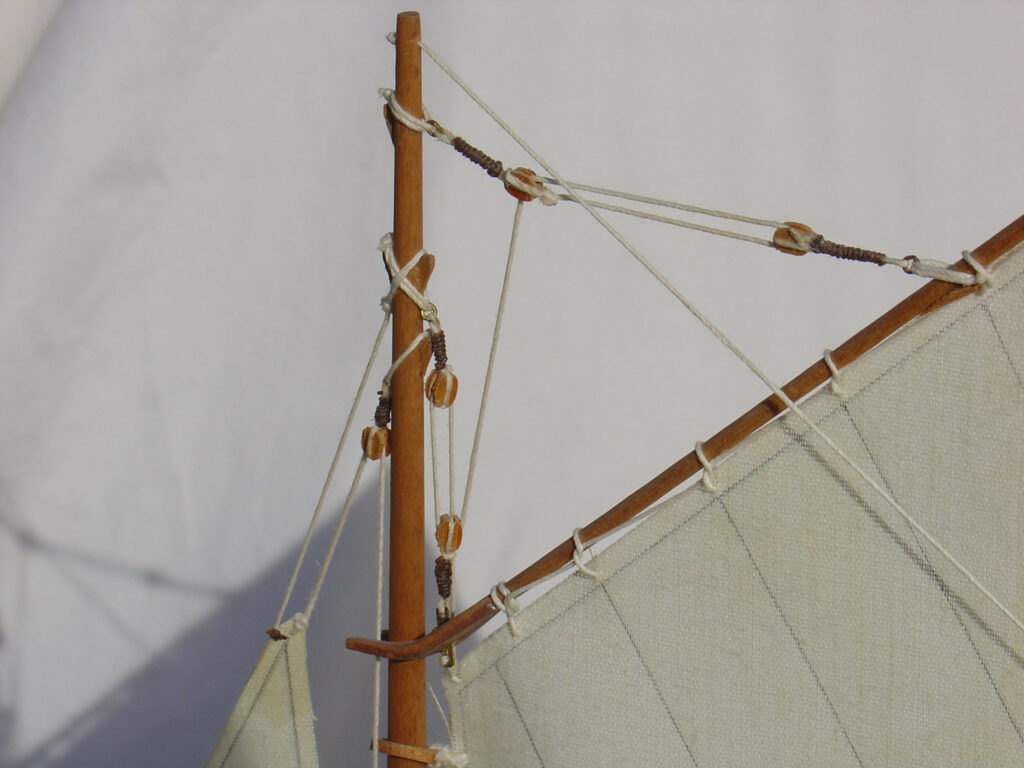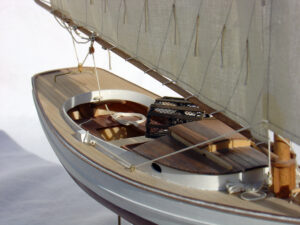
by Greg Harrington
Categories:
- Build type: [Kit][Midwest]
- Material: [Wood]
- Scale: [1:24 (1/2" = 1')]
- Subject Type: [Buy Boat][Fishing]
- Era: [1815-1914]
- Nationality: [United States]
- Propulsion: [Pole/Oar] [Sail]
About the Vessel
The Muscongus Bay lobster smack is closely related to the Friendship sloop. The former has a centerboard and the latter a fixed keel. Smacks are vessels with a live well for storing the catch, which could presumably be found on both types.
Model Images
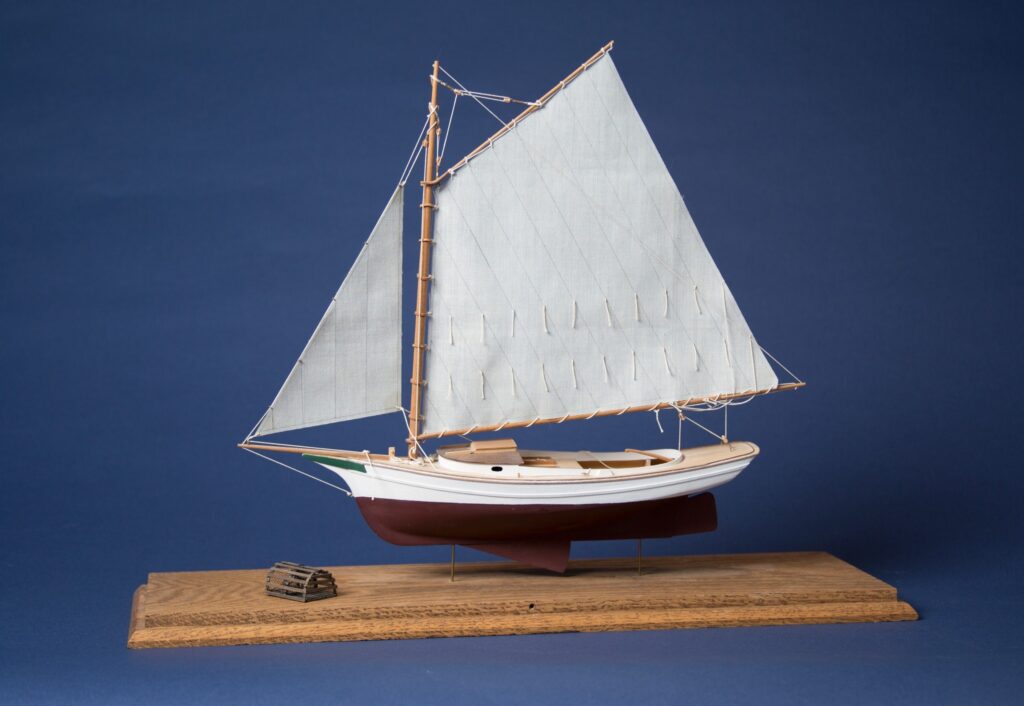
About the Model
This model was built from a kit by Midwest. It was my first wooden model, and first model of any kind since my early teens. I completed it around 1995, before I had much knowledge of model building (not that I have much more now) and before I had much of anything in the way of tools (of which I may now have too many).
The model is far from being an accurate representation, but I did make a number of improvement on the kit. I’ll list some here. The kit is discontinued, but there are still some out there to be found. If nothing else, it may inspire you to look beyond the basic instructions for whatever kit you have before you.
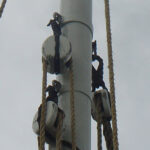
- Instead of cotter pins to secure the blocks at the top of the mast, I used stop cleats. This may be more of a modification than an improvement. I doubt (but cannot prove) that holes would ever have been bored into the mast thru which to run an eye bolt, which is what the cotter pins are intended to simulate. Far more likely would have been a collar with an integral eye, the collar being bolted to or slid over the mast, depending on its construction. An example is shown to the right. Lacking the means to create a metal collar, I used stop cleats instead. My model stop cleats are better facsimiles of actual stop cleats than a cotter pin is of an actual collar. However, I have not seen any images of a lobster smack with stop cleats. Therefore, it may not be considered an improvement at all. I recommend the collars, if you have the ability to create them.
- Before installation, I scribed lines into the sheet provided for the deck and ran a pencil along the incision to simulate planks and caulking. The instructions were to simply lay down the sheet.
- The lines to haul down the leech of the sail were adapted from images of a Friendship Sloop from a book I had at the time. I do not have a record of the title or author.
- I added curvature to the gaff jaws. This was copied from the same book.
- The boom was to be connected to the mast with interlocked cotter pins. I created a jaw instead, similar to the gaff.
- I added coamings and a lifting rope to the live well hatches. The instructions were simply to glue to rectangular pieces of wood to the deck. I also added holes to relieve the air pressure I imagined from surging water within the well. This was purely conjectural on my part.
- I made wooden mast hoops in place of the brass wire indicated by the instructions. I did not know about forming these from thin shaving from a block plane, nor did I own a block plane at the time. So I cut rings from macrame beads. They are very fragile, as the grain is in the wrong direction. they are also undersized.
- I added a lobster trap. For this I used a drawing from a library book.
Next, a list of things I wish I had improved. I either felt it beyond me or did not know any better at the time:
- The rudder is simply glued to the keel. It would be infinitely better to add gudgeons and pintles.
- The plank-on-bulkhead framing is visible behind the seats, underneath the after deck. This could be hidden.
- There are no bolt ropes or cringles on the sails.
- The gaff and boom jaws should have parrels.
- There are no openings for the live well. I do not know if water simply entered through the centerboard trunk.
And finally some things left unfinished that I may eventually resolve, and a mistake that I will not bother with:
- The lifting arm for the centerboard was never installed.
- The oarlocks were never installed.
- The lines for the running rigging are incorrectly coiled.
Links
- Wikipedia page on Friendship Sloops, a derivative type
- Model of a Friendship Sloop by HRSMS member Bob Comet
- Model of a Friendship sloop by HRSMS member Ulrich Guenther
